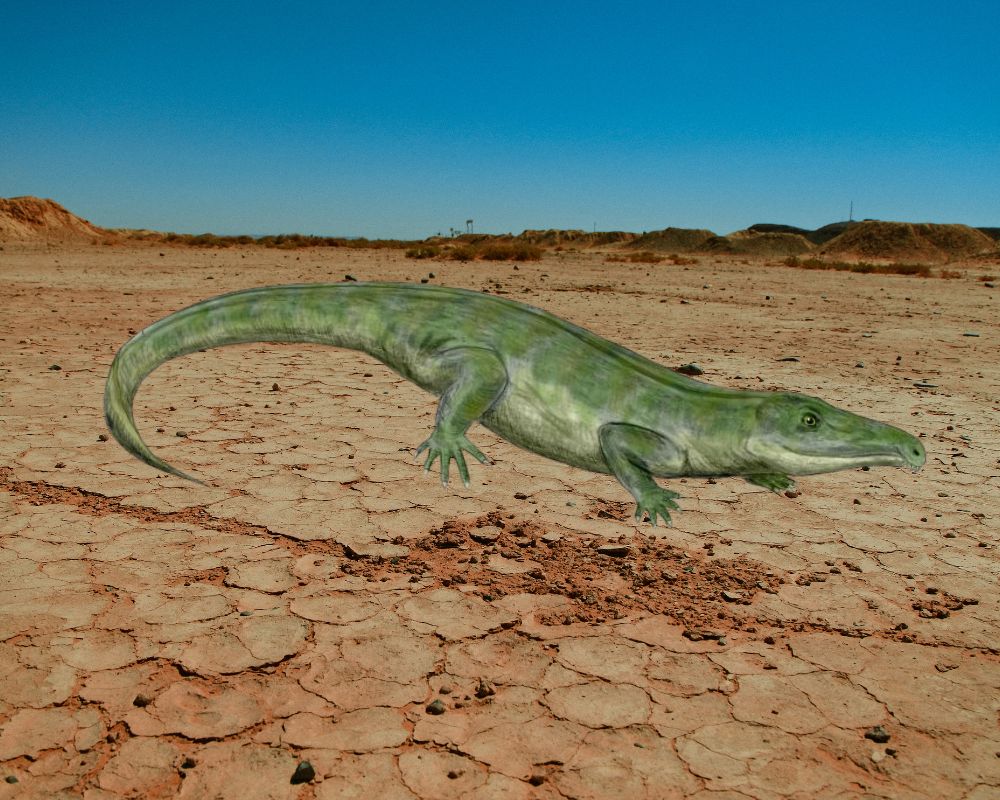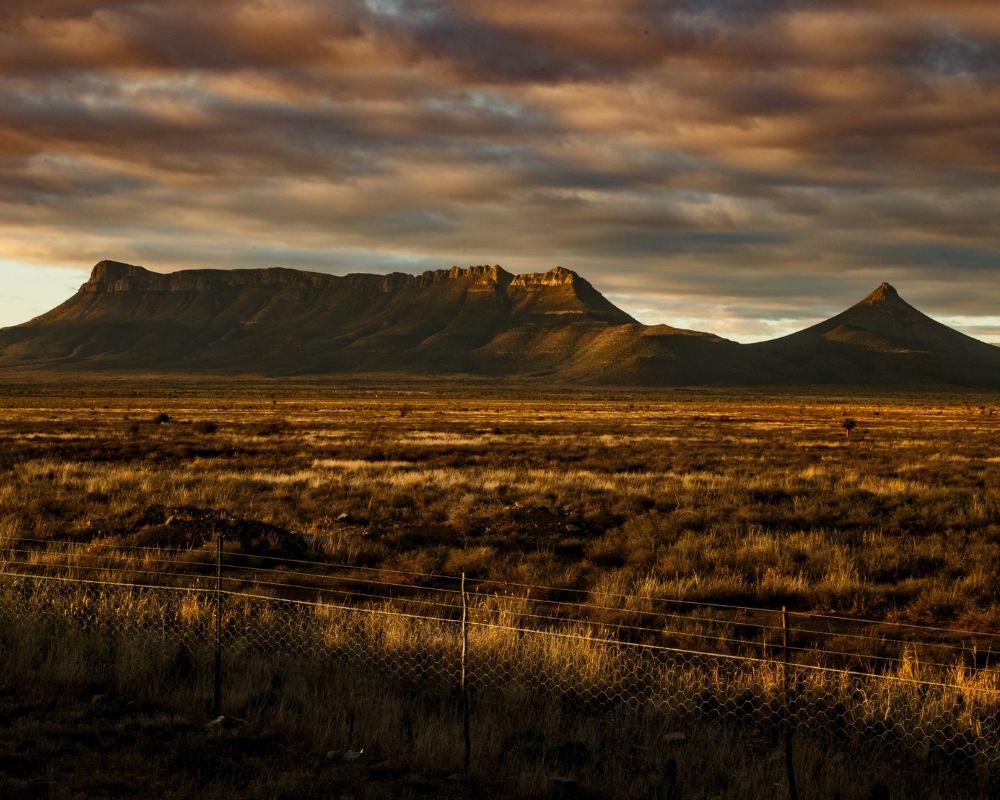The Proterosuchus’ 3 species looked like crocodiles with hooked noses. Their noses helped them catch their prey underwater or on land. The Proterosuchus was the largest carnivore in the Early Triassic period in Africa. This made it the most dangerous predator of its time!
Table of Contents
Some Quick Facts about the Proterosuchus

| Name | Proterosuchus (meaning “primitive crocodile”) |
| Type of dinosaur | Not a dinosaur |
| Territory | Arid and terrestrial, South Africa and China |
| Size | 11 feet long |
| Color | Brownish |
| Interesting Characteristics | Large head, long neck, and hooked nose |
| Diet | Carnivore (Fish or Lystrosaurus) |
| Major Threats | Hostile environment |
The Proterosuchus was not a dinosaur but an archosauriform, just like a Tylosaurus was a marine reptile. This means the Proterosuchus was a reptile from the archosauromorpha group. This group is closely related to dinosaurs.
What Are the Proterosuchus Species?
The Proterosuchus is a genus of reptiles that was discovered in South Africa. In taxonomy, the science that catalogs organisms, a genus is a species group. The Proterosuchus genus has three:
- P. fergusi
- P. alexanderi
- P. goweri
The Proterosuchus fergusi was discovered before the other species. It is the type species of Proterosuchus. In paleontology, its name is a reference for the entire genus name. The name “fergusi” was an homage by R. Broom to John Fergus, the doctor who donated its fossil to the South African Museum. Its mouth couldn’t open very wide because the bone at the back of its jaw (quadrate) has a lower angle than other proterosuchid species.
A. C. Hoffman discovered P. alexanderi in 1963 on the farm Zeekoegat in South Africa. Its mouth was straighter than the other species.
And Martín Ezcurra and Richard Butler named the P. goweri in 2015. Its mouth was S-shaped and the roundest.
What Does the Name Proterosuchus Mean?
The name proterosuchus means “primitive crocodile.” This makes sense since modern crocodiles look like this reptile. Crocodilians and Proterosuchus are from groups with the same ancestor, archosauromorpha. Now, their groups, archosauriform, and archosaur, are considered equivalent.
The proterosuchus lived in the Early Triassic period, after the Permian-Triassic extinction event. This was the worst extinction event in Earth’s history. Chasmatosaurus is a junior synonym of proterosuchus.
Was Proterosuchus Predator or Prey?
The Proterosuchus was the apex predator of its time. Its unique hooked nose was used to catch its prey. As a carnivore, it ate fish or Lystrosaurus, a herbivorous animal that survived the Permian-Triassic Extinction Event.
A young Proterosuchus had a smaller head and fewer, more prominent teeth than an adult one, so it probably hunted different prey. This made young and adult proterosuchus less likely to fight. Many animal species fight for resources like food and shelter.
Who Discovered the Proterosuchus?

The Proterosuchus fergusi was the first species discovered in this group. John Fergus, a doctor, donated the skull of this species found in Tarkastad in Eastern Cape, South Africa, to the South African Museum. Robert Broom, a paleontologist and doctor, named the fossil.
The Proterosuchus lived in China and South Africa. It lived in the Karoo desert and was the first new vertebrate to appear after the Permian-Triassic extinction event or Great Dying.
Did the Proterosuchus Live on Land or in Water?
Scientists don’t know which is more accurate, but the Proterosuchus was probably semiaquatic. That means it lived both on land and water. But it also lived in a desert, so its habitat was arid, mostly dry.
Since it had a hooked nose and eyes atop its head, it could hide most of its head underwater. When animals came to drink water in rare desert water sources, it caught them. That’s how it hunted.

